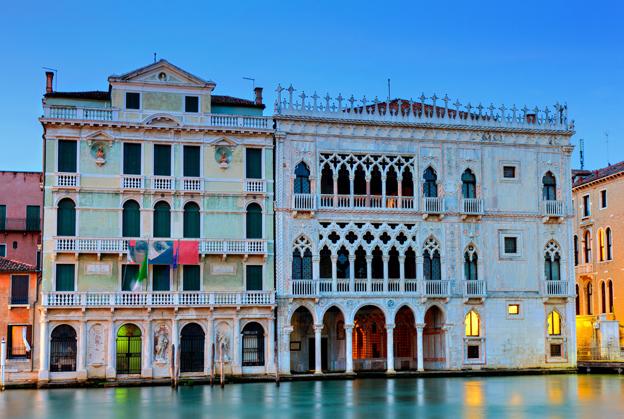Done with the Doge’s Palace? Head to Ca’ d’Oro
ITA:

Between 1421 and 1443, the wealthy merchant Marino Contarini decided to build a lavish residence to symbolize his wealth and prestige. (The Contarini family gave Venice eight Doges between 1043 and 1676.)
The palace became known as Ca' d'Oro – “golden house” – because the façade, which looks over the Grand Canal, was once adorned with marbles, polychrome decorations and several gold-leaf details.
Even though many decorations are no longer visible today, Ca’ d’Oro remains one of the masterpieces of Venetian late Gothic architecture and is well worth a visit. In 1894, the building was acquired by the baron Giorgio Franchetti, who renovated it with great care to house his own collection of paintings, sculpture, and other artwork displayed over two floors. The collection was expanded over time to include furniture, 16th-century Flemish tapestries and bronzes, as well as Renaissance pieces looted from Veneto churches during Napoleon’s conquest of Italy. Surely, the collection highlights are Titian's Venus at the Mirror and Andrea Mantegna's St. Sebastian.
The restoration carried out by Franchetti included the reconstruction of the stairway and of the internal courtyard whose paving was enriched with precious ancient marbles and stones, which create an impressive play of colors.
End your visit of Ca' d'Oro on the loggie (balconies) for a magnificent view, framed by Gothic arcades, of the Grand Canal and across to the Rialto market.
Tra il 1421 e il 1443, il ricco mercante Marino Contarini fece costruire una sontuosa residenza che simboleggiasse la sua ricchezza e prestigio. (La famiglia Contarini ha dato a Venezia otto Dogi tra il 1043 e il 1676.)
Il palazzo divenne noto come Ca' d'Oro perché la facciata, che si affaccia sul Canal Grande, un tempo era decorata con marmi, decorazioni policrome e numerosi dettagli in foglia d'oro.
Anche se molte decorazioni non sono più visibili oggi, Ca' d'Oro rimane uno dei capolavori dell’architettura veneziana tardo-gotica e merita una visita. Nel 1894, l'edificio fu acquistato dal barone Giorgio Franchetti, che lo restaurò con grande cura per ospitare la sua collezione di dipinti, sculture e altre opere d'arte, allestita su due piani. La collezione è stata ampliata nel corso del tempo e include mobili, arazzi fiamminghi del 16° secolo e bronzi, ma anche opere rinascimentali depredate dalle chiese del Veneto durante la conquista napoleonica d'Italia. Senza dubbio i pezzi forti della collezione sono la Venere allo specchio di Tiziano e San Sebastiano di Andrea Mantegna.
Durante i lavori di restauro ordinati da Franchetti sono stati ricostruiti la scalinata e il cortile interno con il pavimento arricchito da preziosi marmi antichi e pietre, che creano un gioco cromatico notevole.
Il modo migliore per terminare la visita di Ca' d'Oro è sulle loggie (balconi) per ammirare una magnifica vista, incorniciata da arcate gotiche, sul Canal Grande e verso il mercato di Rialto.











